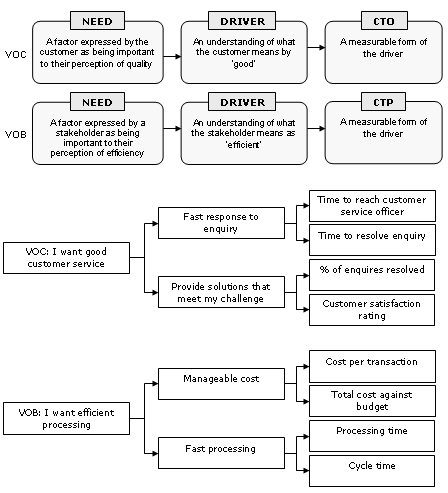Critical to Quality (CTQ)
Critical to quality (CTQ) conveys quality of a product or service that is derived from the voice of the customer. A good CTQ is a verbose statement of a quality goal and should be:
- Measurable
- Include operational definition (e.g. definition of defect)
- Specific performance standard: (e.g. Target DPMO, specifications limits, sigma level)

Translate VOC to CTQ
Once VOC is captured, the next step is to translate it to CTQ (measurable goal). This is an important step because if you cannot measure how well you are doing, you will not be able to gage how satisfied customers are with your product or service. In a VOC statement, customer may indicate that they want good service or timely delivery. However, the key question is what specific level of quality is considered good and at what time is considered timely from the perspective of the customer. For example, the needs of a bank customer could be expressed as, “I want to be served quickly.” In this case, the driver of customer satisfaction is timeliness. Further clarification with the customer is required to understand exactly what ‘quickly’ means. The objective is to produce a CTQ statement such as “Customers queuing for teller service in a branch want to wait no longer than 3 minutes before getting served”. The following diagram shows a CTQ tree which is a useful tool to translate VOC to CTQ or VOB to CTP. There are also examples of how a VOC and VOB statement is translated into CTQs and CTPs.
